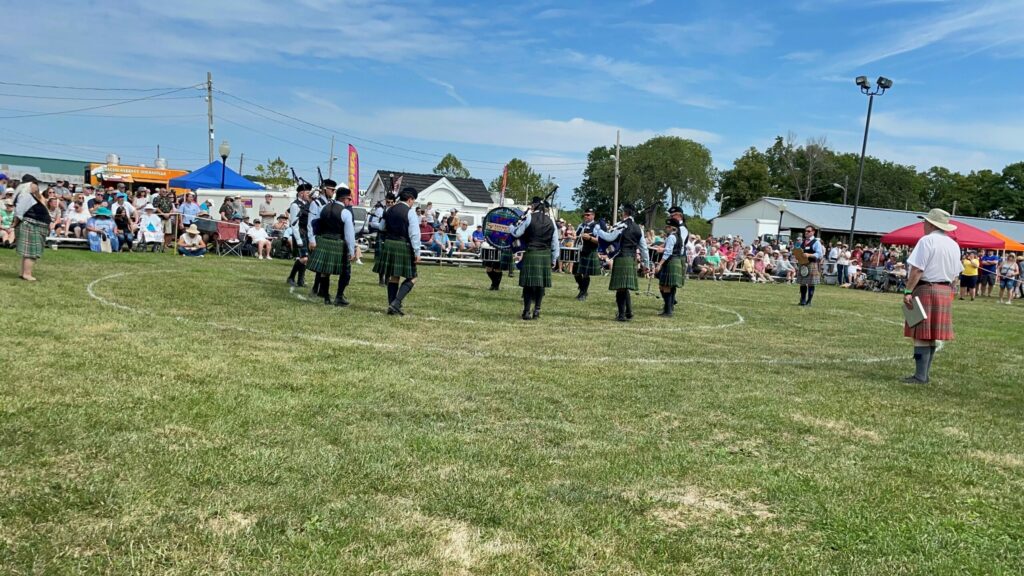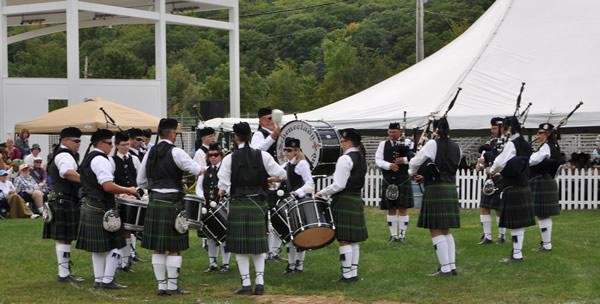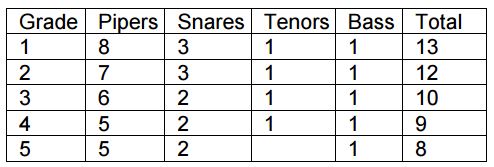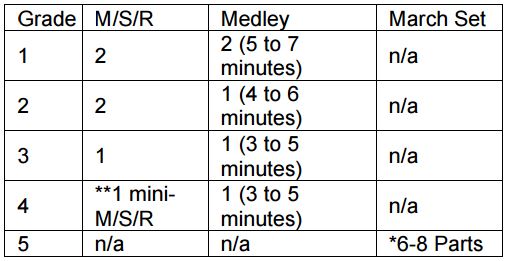Overview:
Pipe bands strive for a full “big band” sound. Pipers play mostly in unison. Harmony, when used, creates a distinctive haunting sound. Bands must meet musical and minimum personnel standards varying by grade.
Larger bands may not be better bands. Additional players must play and sound as well as the minimum complement, or unison will suffer. But, extra players can add volume and fullness to a band’s sound and may add to the band’s standing. In every case, it’s not just the level of difficulty of the music that counts, but how well it is played.
In the drum section, a “lead” snare drummer normally plays throughout the selection. The rest of the snares join on repeated sections and on “bit” parts to add accent and dynamics. The bass drummer is critical to controlling tempos and accenting the music. The tenor drummers add to the show with their twirling, and provide rhythmic fill and dynamics.
Pipe and drum sections are judged separately. A band’s total score is computed by weighing the judges individual scores: 50% piping, 25% drumming and 25% ensemble. In addition to the solo events guidelines, pipe band judges look for a true sound, with all instruments sounding as one; togetherness in playing the music; a strong and precise start and finish; and clean definitive transitions between tunes.
Bands form an inward-facing “circle” to improve their concentration. The Drum Major, who carries a mace or staff and leads the band while marching, is judged in a separate event where drills, dress, commands and deportment are evaluated.





